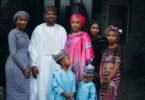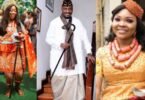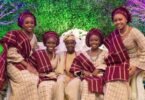Igbo fashion culture is a beautiful, alive, and never static representation of the people, their creativity and their identity. Featuring elaborate patterns, bright and powerful accents, and numerous significances of the clothing that Igbo people wear, this fashion is truly a continuation of the people’s history and culture. It has now adopted some modern features while at the same time still giving the impression of the culture of the people.
In this article, we’ll take a closer look at the colourful side of Igbo fashion and its attire, ornaments to the meaning in ceremonies and everyday use.
1. Traditional Attires of the Igbo People
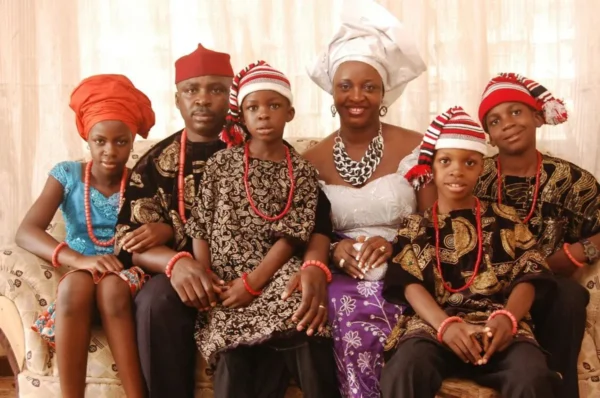
The traditional attire of the Igbo people varies across different regions but shares common features that emphasize elegance, identity, and symbolism.
Men’s Attire
- Isiagu: The Isiagu (pronounced ee-see-ah-gu) relates to a garment that appears like a Western cut tunic that contains embroidery. Produced from velvet or damask the shirt is ornamented by powerful motifs such as the heads of lions or geometrical figures.
- Wrappers: Paired with the Isiagu, men typically wear wrappers made from silk, cotton, or ankara fabrics. The length and style of the wrapper can vary, but it is always tied gracefully around the waist.
- Red Cap: Among titled men or elders, the red cap is a prominent accessory that symbolizes leadership, wisdom, and respect within the community.
Women’s Attire
- George Wrapper and Blouse: Women often wear a beautifully patterned wrapper paired with a fitted blouse. The George wrapper, imported from India and embellished with gold threads, is highly prized.
- Ichafu (Head Tie): The ichafu or head tie is a crucial element of women’s attire, often styled elaborately to complement the outfit.
Beaded Accessories: Women accessorize with coral beads, necklaces, bracelets, and anklets, enhancing the regal look of traditional Igbo fashion.
2. Significance of Colors and Fabrics
In Igbo fashioners, color and cloth have meaning that conveys status, feeling, and time of day.
Colors:
- Red and White: In this context red stands for energy and strength and white for purity and peace. These colours are associates with traditional ceremonies and festivals in many cultures.
- Gold and Blue: The colour gold represents wealth and blue represent wisdom and peace.
Fabrics:
- Akwete Cloth: Akwete is an indigenous Igbo cloth – weav¬ing that creates printed fabrics. Originally it was used in this upper eastern region as royal raiment and is even up to now considered as handsome and beautifully worked.
- Ankara: Durable and lively, Ankara a new addition to igbo attire has incorporated the new era fashion alongside the traditional styles.
3. Fashion in Ceremonial Contexts
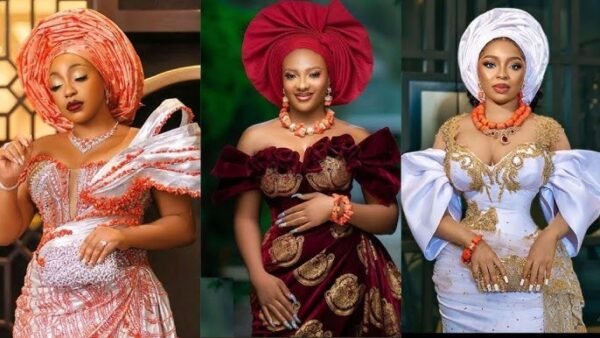
Clothing has a significant a position in Igbo rites including marriage ceremonies, festivals and coming of age. The nature of dressing usually commensurate with the extent of formality of the occasion and the part played by the people involved.
Traditional Weddings
The Igba Nkwu or traditional marriage, is a major display of the beauty of Igbo fashion. For the bride, she presents a blouse covered with beads, a wrapper together with her head gear which also has coral beads. This the groom accompanies her with an Isiagu and wrapper to show that they are in unity.
Festivals
During festivals like the New Yam Festival (Iri Ji Ọhụrụ), traditional attire takes center stage. Attendees wear vibrant outfits adorned with beads and accessories, celebrating cultural pride and community spirit.
Titled Men and Women
Those who receive traditional titles often wear elaborate attires that signify their elevated status. For instance, a chief’s outfit may include a robe, ceremonial staff, and an intricately designed red cap.
4. The Role of Beads in Igbo Fashion
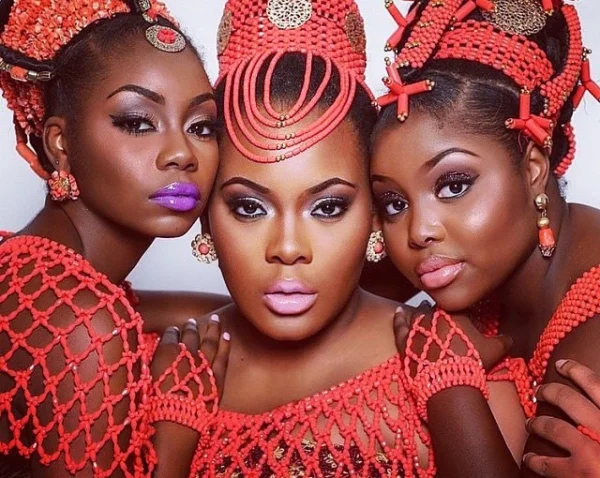
Beads are a cornerstone of Igbo fashion, symbolizing beauty, status, and tradition. They are often made from coral, glass, or clay and come in various shapes and sizes.
For Women:
- Coral beads are commonly worn by brides and titled women during special occasions.
- Waist beads are considered both ornamental and symbolic, often worn to accentuate femininity and cultural identity.
For Men:
- Beaded necklaces are worn by men during ceremonies or as a mark of status.
- Titled men or elders may wear large beads to signify their rank in society.
5. Modern Influences on Igbo Fashion
While traditional Igbo attire remains cherished, modern influences have introduced a fusion of styles that blend heritage with contemporary trends.
Contemporary Styles:
- Designers now incorporate ankara and lace fabrics into formal and casual wear, making Igbo fashion accessible to younger generations.
- Western-style tailoring is combined with traditional elements, creating unique looks for everyday wear and formal occasions.
Celebrity Influence:
Fashion is, undoubtedly, one of Nigeria’s most flourishing industries, and it is particularly important to bring attention to Igbo fashion through Nollywood. Local dress wears wear presented in movies are often imitated by actors and actresses thus giving new dimensions to Igbo style.
6. Igbo Hairstyles and Makeup
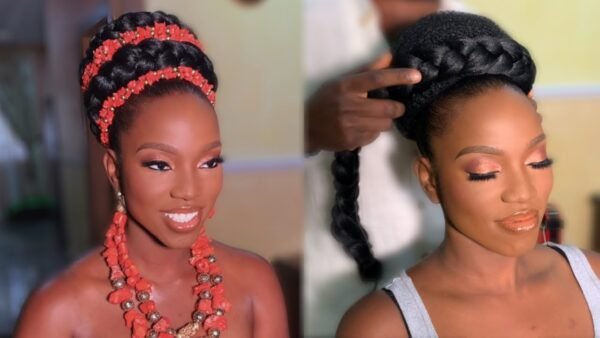
Hairstyles and makeup are integral to Igbo fashion, completing the look for both men and women.
Traditional Hairstyles:
- Women often braid their hair in intricate patterns, adorned with beads or cowries for added beauty. Styles like Isi Owu and Didi reflect creativity and cultural identity.
- Men typically maintain clean-shaven heads or low cuts, although younger generations may experiment with modern styles.
Makeup:
For special occasions, women use natural products like ụdụ (camwood) to adorn their faces, adding a touch of elegance and cultural pride.
7. Preservation of Igbo Fashion Culture
Igbo fashion is not extinct up to this day, people, and companies are trying to pass the Indigenous dressing culture to the next generation.
Fashion Festivals and Shows:
Other events, such as cultural fashion shows, create a way through which designers present new pieces of clothing and at the same time pass on information about the importance of Igbo dress.
Educational Programs:
Demonstration and teaching of traditional weaving, beading and sewing ant the classes to clear knowledge of the skills involved in the fashion of the Igbo people are carried out.
Digital Platforms:
Fast and modern means of giving information the use of social media and online stores has increased the exposure of Igbo fashion to the global market where people with Igbo origin or anyone who wants to embrace the Igbo traditional wear can get them no matter the country they are in.
Conclusion
The fashion culture of the igbo is colorful adorned with tradition and symbolism as well as an aspect of art. Even the name of the wrappers shows the primal glory, Isiagu and George or the rich beadwork and hair dressing, every thing on the and style of an Igbo woman narrates a story of proud identity.
Nonetheless, the period in which Igbo fashion is evident of modern influence in its development, the core identity of remains grounded in its traditional origins. Igbo attires when showcased in a normal traditional marriage or in the present day fashion runway show is a reminder of the people of their strength, inventiveness and bond with the African culture.

